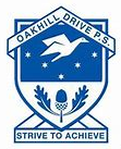|
Success Criteria:
A theme that resonated with our team was the mismatch that occurs between teachers’ beliefs about established cultures of thinking and actual classroom practice. We felt that this mismatch between a teacher’s belief system and their practice may be fairly common and discussed a number of factors that may contribute to this. Perhaps this mismatch is a result of spending too much time and rhetoric in meetings, conferences and professional learning initiatives over recent years, exploring the importance of students being active participants in their learning (addressing the why), but many practitioners may not know what this actually looks like and may not know HOW to guide students towards this effectively in their classrooms. We felt Dylan Wiliam/s strategies have been a great starting point for many of our teachers (including ourselves) in terms of the what this looks like and how we can achieve this - but as TWPS has identified, there is more work needed around this. Leadership A focus on transformational leadership may also contribute to this mismatch as leaders may have been working towards: creating a shared vision, inspiring others towards the vision, etc. Whereas now, Hattie and others tell us that the most effective leaders are instructional. A move in our leadership development toward working collaboratively and shoulder to shoulder with teachers to develop students self efficacy, self regulation and active engagement, may be helpful. Certainly the planning stage is an important step, with thought given to how we can identify and explore key transferable ideas in a meaningful away, allowing students to be actively involved in co-developing learning paths and success criteria, so that they ‘own’ their learning, know why it’s important and can monitor their progress. What do we hope to observe for the POP? (Of course, not all listed characteristics would be evident in all classrooms / lessons.) QUESTIONING
QUALITY TASKS
STUDENT OWNERSHIP
STUDENT DIALOGUE
2 Comments
The concept of the mismatch between the beliefs that teacher’s hold and the practice they partake in can often be different due to a myriad of forces both external and internal. Anything from time, external commitments, previously held beliefs and continuing on what they have always done.
Reply
Barbara
11/16/2016 08:11:12 pm
I love the graphic and the idea that students, teachers and leaders may have to move outside their comfort zone for the "magic to happen". And your success criteria that focuses on taking individual accountability for moving the learning of otters forward. What do other people think about setting success criteria for individual accountability in group tasks?
Reply
Leave a Reply. |
AuthorBarbara Reynolds Archives
March 2017
Categories |

 RSS Feed
RSS Feed



